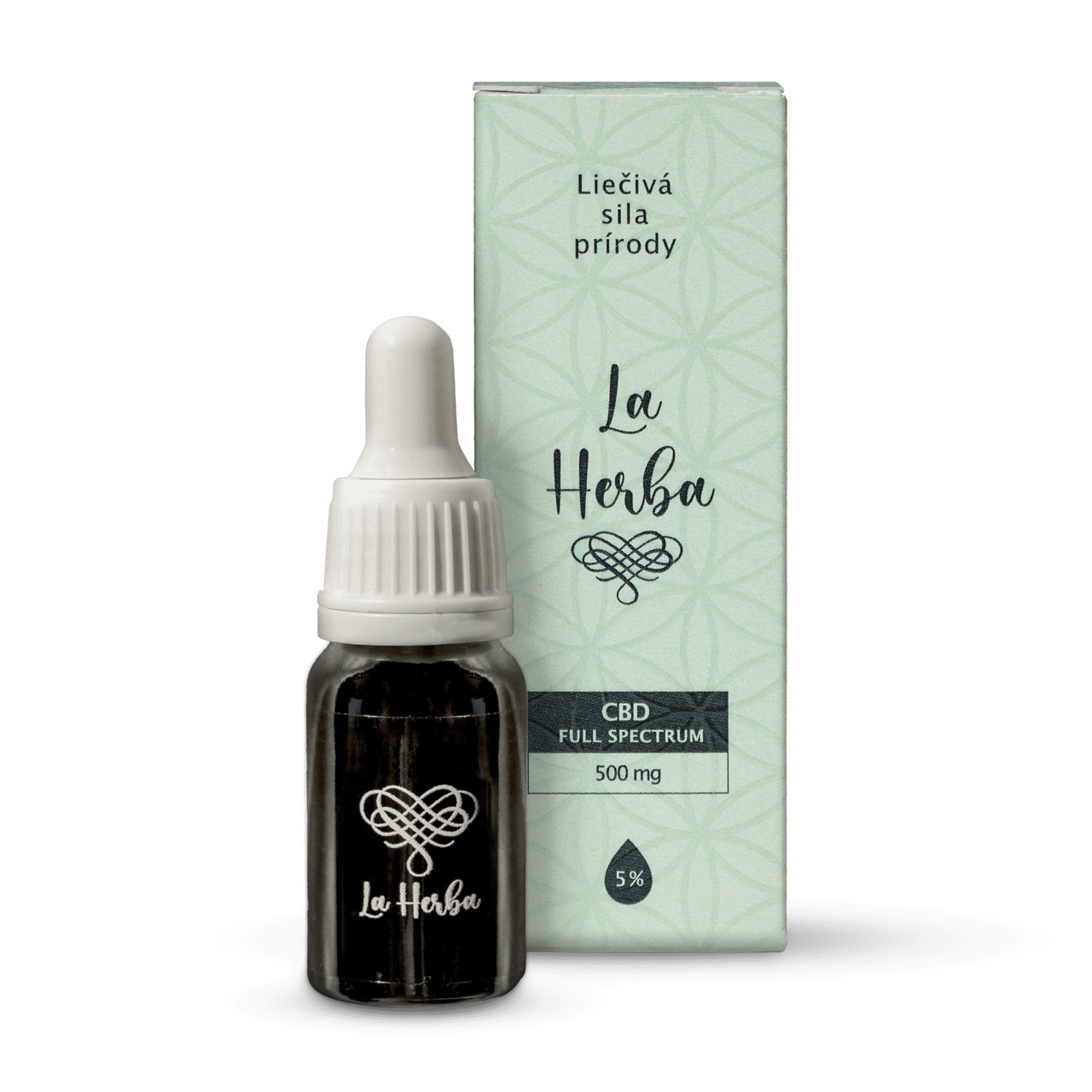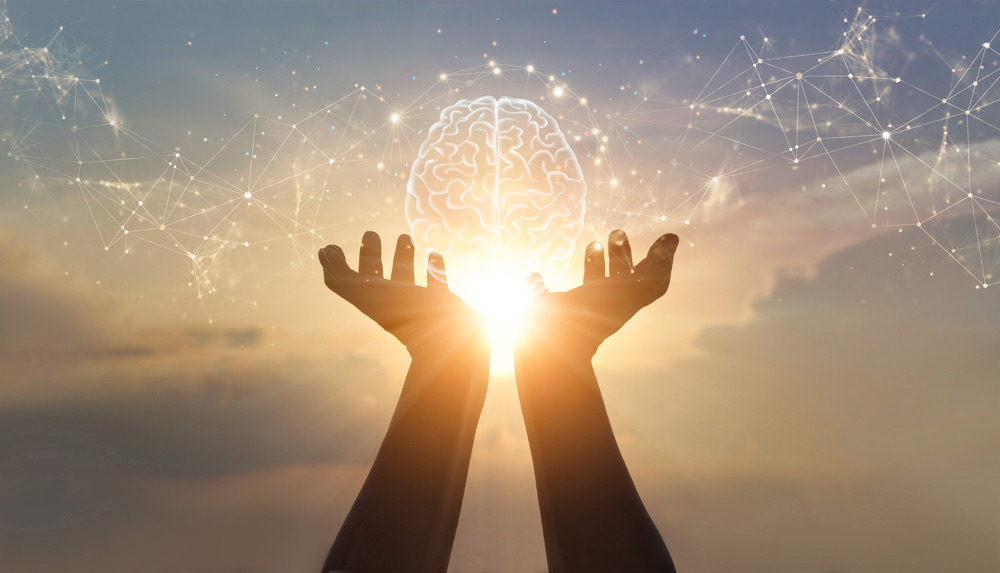
How do CBD and CBG work? The human body's endocannabinoid system.
Endocannabinoid system
why is it so important?
Hemp would be of no benefit to us unless it was of benefit to ECS. The medicinal benefits of CBD, CBG and other cannabinoids depend mainly on the ability to regulate this key system. If we want our organism to tick like clockwork, we need to have it in balance (homeostasis, balance). The latter will provide ECS when it is working properly. Regardless of the use of CBD, it is still active in our body and, together with endocannabinoids, helps maintain the body's internal functions. Endocannabinoids are receptors distributed throughout the body, they are the body's own cannabinoids. Together with phytocannabinoids (CBD, CBG, ...) these receptors are able to interact with the body and brain.
What is ECS?
The endocannabinoid system (ECS) is a complex cellular signaling system only recently identified in the early 1990s by researchers investigating THC. The ECS plays a very important role in the development of the central nervous system (CNS) - the brain and spinal cord. It is present almost everywhere in the human body and helps maintain homeostasis, the balance of the human body.
Experts are still trying to fully understand the ECS. But so far we know that it plays a role in regulating a range of functions and processes, including:
- sleep
- mood
- appetite
- memory
- reproduction and fertility
- many others
The ECS exists and is active in our body even when we are not consuming cannabis (phytocannabinoids). Read on to learn more about ECS, including how it works and interacts with the cannabinoids CBD and THC.
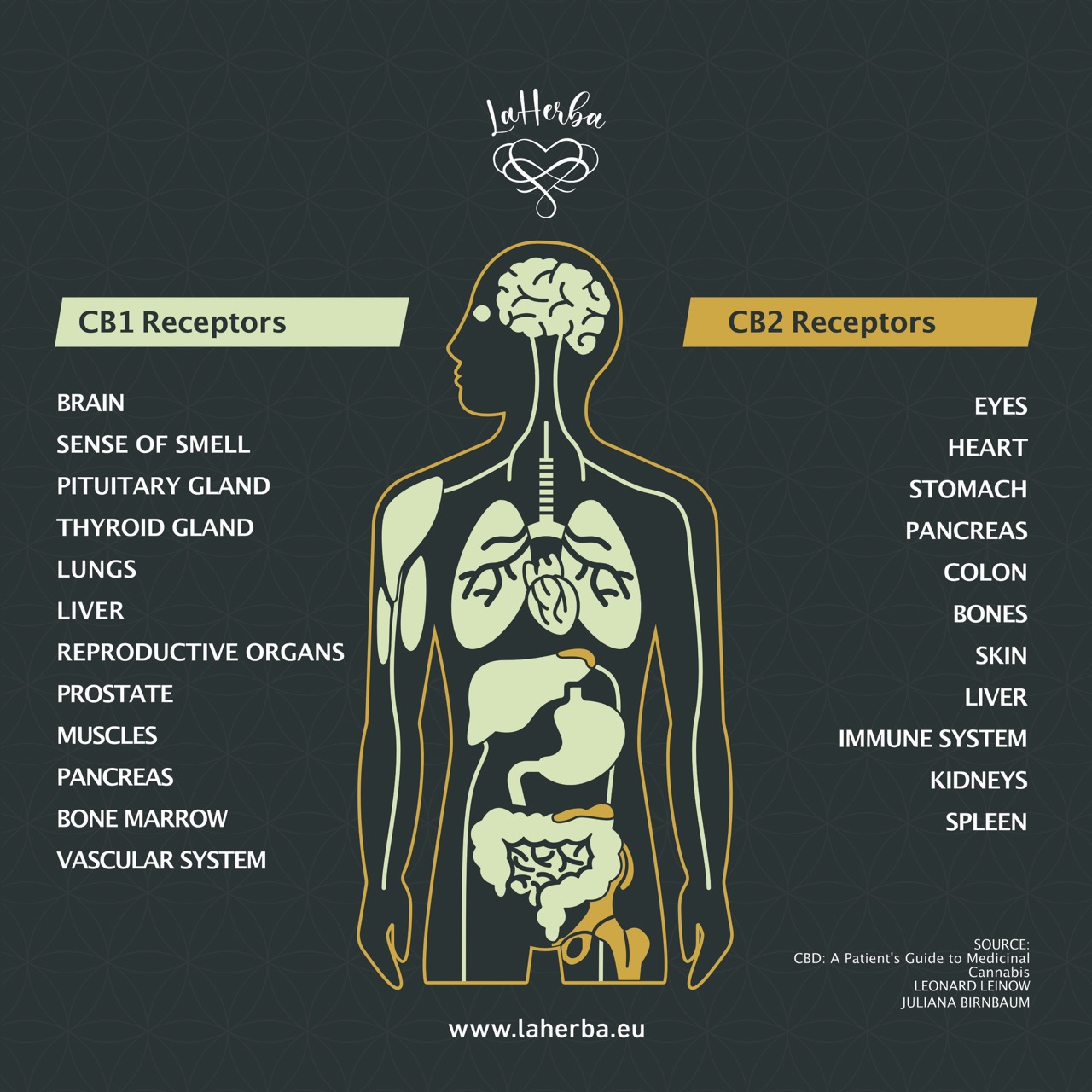
What are the functions of ECS?
The ECS is complicated, and experts have not yet determined exactly how it works or all of its potential functions. Trusted Source research has linked ECS to the following processes:
- appetite and digestion
- metabolism
- chronic pain
- inflammation and other immune system reactions
- mood
- learning and memory
- motor control
- sleep
- cardiovascular system function
- muscle building
- bone remodeling and growth
- liver function
- reproductive system function
- stress
- skin and nerve functions
All of these functions contribute to homeostasis, meaning the stability of your internal environment. For example, if an outside force, such as pain from an injury or fever, disrupts your body's homeostasis, your ECS kicks in to help your body return to ideal functioning.
Today, experts believe that the main role of the ECS is to maintain homeostasis.
Many of us have heard of some of the transmitter systems in our body, such as the sympathetic nervous system, which gives us our fight-or-flight response. Fewer have heard of the recently discovered endocannabinoid system (ECS), which is amazing when you consider that the ECS is critical to nearly every aspect of our immediate functioning.
The ECS regulates and controls many of our most important bodily functions, such as learning and memory, emotional processing, sleep, temperature control, pain control, inflammatory and immune responses, and eating. ECS is currently the center of renewed international drug research and development.
How does it all work?
The ECS includes three basic components: receptors, endocannabinoids, and enzymes. They interact with each other, they influence each other.
1. Endocannabinoid RECEPTORS
These receptors are found throughout the body and perform an important function. Endocannabinoids bind to them to signal the ECS to act. There are two main endocannabinoid receptors:
- CB1 receptors, which are mostly found in the central nervous system
- CB2 receptors, which are mostly found in your peripheral nervous system, especially in immune cells.
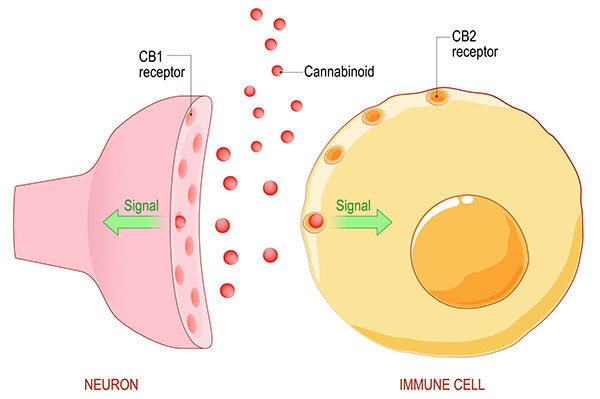
CB1 are located in the entire nervous system but also in other areas
- brain
- spinal cord
- fat cells
- liver
- pancreas
- skeletal muscle
- gastrointestinal tract
- reproduction system
CB2 are found throughout the body, including the immune system
- immune cells
- gastrointestinal tract
- liver
- fat cells
- bones
- breeding systems
Endocannabinoids can bind to any of the receptors. The resulting effects depend on where the receptor is located and which endocannabinoid it binds to.
For example, endocannabinoids can target CB1 receptors in the spinal cord to relieve pain. Others can bind to the CB2 receptor in your immune cells to signal that your body is experiencing inflammation, a common sign of autoimmune disorders.
2. Endocannabinoids
Endocannabinoids, also called endogenous cannabinoids, are molecules made by our bodies. They are similar to cannabinoids, but our body produces them.
They are like messengers who tell the receptors what to do.
So far, experts have identified two key endocannabinoids:
- anandamide (AEA)
- 2-arachidonoylglycerol (2-AG)
They help maintain the smooth running of internal functions. Your body produces them as needed, so it's hard to know what the typical levels are for each.
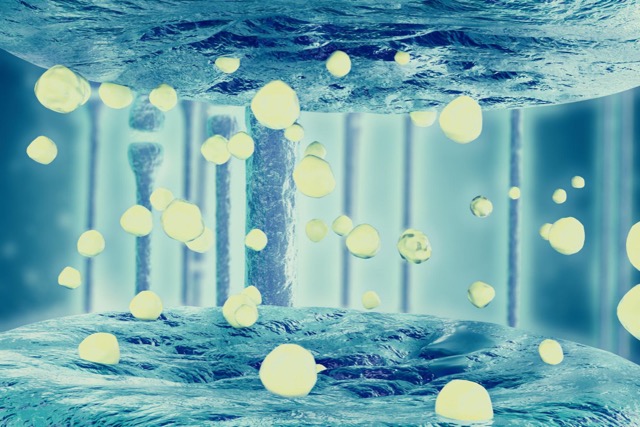
3. Endocannabinoid ENZYMES
Enzymes are responsible for breaking down endocannabinoids once they have done their job. Two main enzymes are responsible for this:
- fatty acid amide hydrolase, which breaks down AEA
monoacyl - glycerol acid lipase, which typically breaks down 2-AG
What is ECS again?
The ECS contains a vast network of chemical signals and cell receptors that are densely packed throughout our brains and bodies. "Cannabinoid" receptors in the brain - CB1 receptors - outnumber many other types of receptors in the brain. They act as traffic cops, controlling the levels and activity of most other neurotransmitters. This is how they regulate things: by instant feedback, increasing or decreasing the activity of whatever system needs to be adjusted, be it hunger, temperature, or wakefulness.
To stimulate these receptors, our bodies produce molecules called endocannabinoids, which have a structural similarity to molecules in the cannabis plant. The first endocannabinoid to be discovered was named anandamide after the Sanskrit word ananda for bliss. Each of us has tiny cannabis-like molecules in our brains. The hemp plant, which has been used by humans for about 5,000 years, essentially works by hijacking this ancient cellular machinery.
How does CBD interact with the ECS?
The other main cannabinoid found in cannabis is cannabidiol (CBD). Unlike THC, CBD doesn't get you "high" and usually doesn't cause any negative effects.
Experts aren't entirely sure how CBD interacts with the ECS. But they do know that it does not bind to CB1 or CB2 receptors like THC.
Instead, many believe it works by preventing the breakdown of endocannabinoids. This allows them to have a greater effect on your body. Others believe that CBD binds to a receptor that has yet to be discovered.
While the details of how it works are still up for debate, research suggests that CBD can help with pain, nausea, and other symptoms associated with several conditions.
How does THC interacts with the ECS?
Tetrahydrocannabinol (THC) is one of the main cannabinoids found in cannabis. It's a compound that can get you "high". Once in your body, THC interacts with your ECS by binding to receptors, just like endocannabinoids. It is potent in part because it can bind to both CB1 and CB2 receptors.
This allows it to have a range of effects on your body and mind, some more desirable than others. For example, THC can help reduce pain and stimulate appetite. But in some cases it can also cause paranoia and anxiety. Experts are currently looking for ways to make synthetic THC cannabinoids that interact with the ECS in only beneficial ways.
What about endocannabinoid deficiency?
Some experts believe in a theory known as clinical endocannabinoid deficiency (CECD). This theory suggests that low levels of endocannabinoids in your body or ECS dysfunction may contribute to the development of certain conditions.
A 2016 paper reviewing more than 10 years of research on the topic suggests that the theory could explain why some people develop migraines, fibromyalgia and irritable bowel syndrome.
None of these conditions have a clear underlying cause. They are also often resistant to treatment and sometimes occur side by side.
If CECD plays any role in these conditions, targeting the ECS or endocannabinoid production could be the missing key to treatment, but further research is needed.
ECS plays a big role in maintaining stable internal processes. But there's still a lot we don't know about it. As experts better understand the ECS, it could eventually hold the key to treating several conditions.
We hope this article has made you more aware of why the ECS is so important to humans and how wonderful it is to have it in balance :)
Author: Zuzana Marcová
Sources:
health.harvard.edu
ncbi.nlm.nih.gov
"Healing Power of Hemp"

The information provided on this website is for educational purposes only. None of the information presented here is intended as a substitute for a medical diagnosis and such information cannot be considered medical advice or recommended treatment. This website does not support, approve or advocate the use of narcotic and psychotropic substances.
Discover Your Life Path Number and Glimpse into Your Destiny
The essence of your life can be understood by calculating a single number – your Life Path Number. This number is linked with other numerological cycles of your life and everything that should be c...
Chaga Siberian, Chaga - the strongest natural antioxidant in the world
Content of the article
1. What is chaga? What does this miracle mushroom bring?
2. What is chaga used for?
3. For what problems is it appropriate to reach for chaga?
4. What spectrum of vitamins does...
The Yawanawa Tribe
Since time immemorial Yawanawa people have lived in harmony with nature on the banks of the Gregorio river in the Amazonian region that concentrates the greatest biodiversity on the planet. In this...
The Puyanawa tribe
The Poianauas (Puyanawa) are an indigenous group that lives in the far west of the Brazilian state of Acre, more precisely in the Indigenous Land Poyanawa, located in the municipality of Mancio Lim...

